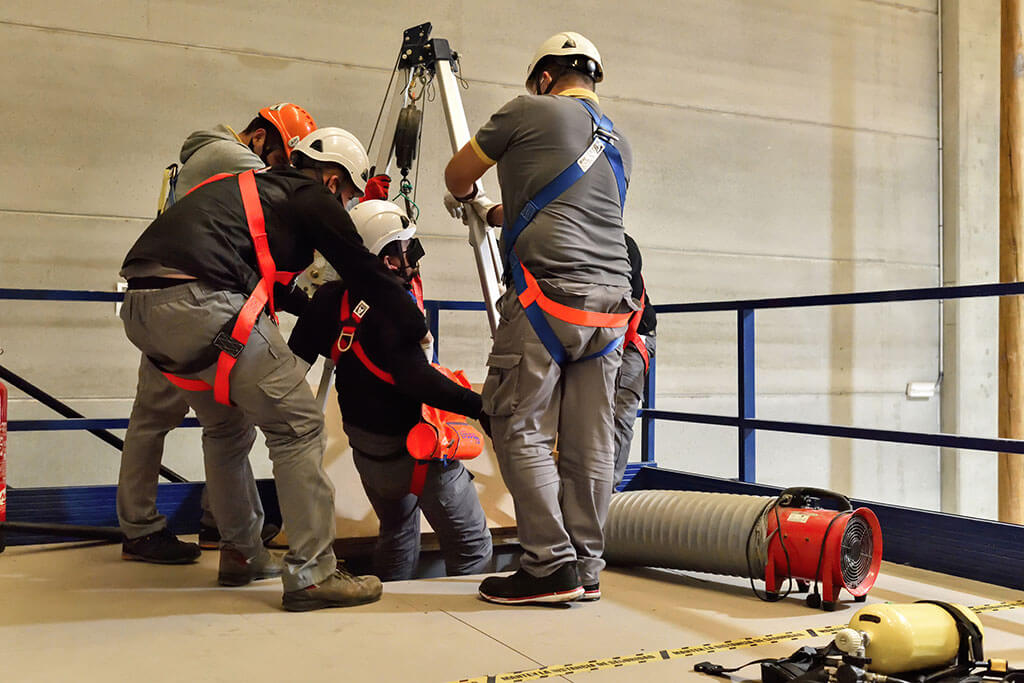5 Steps To Creating An Effective Confined Space Rescue Plan
5 Steps To Creating An Effective Confined Space Rescue Plan
July 14, 2022 |
Any location not built for continuous human occupancy and with limited ways of admission and exit is referred to as a “confined space.” For the safety of your employees, having a confined space rescue plan is important. Here are five steps to creating an effective confined space rescue plan!
Step 1: Understand the Emergency
As there are so many different types of emergencies, the first question to ask is, “What happened?”
The rescue attempt must be proportionate to the severity of the situation. If a worker is simply feeling queasy and can safely leave the space, there is no need to carry out a tactical action.
Workers entering restricted areas should be trained on how to spot hypoxia or narcosis if air monitoring fails, allowing them enough time to self-rescue. Despite its simplicity, self-rescue is considered a sort of “rescue” and is preferable to other types of rescues as extra parties are not required.
However, confined space rescue plans are primarily concerned with rescuers or rescue teams intervening. They begin when self-rescue is no longer viable. Depending on the situation, rescues might be defensive (recovery) or offensive (rescue). For defensive, the rescued worker is doubtful to be resurrected. Due to the nature of threats in confined areas, response times must be extremely fast. A rescue mission can change into a recovery mission in as little as 4 to 6 minutes.
Step 2: Conduct a Site Assessment
A permit is required to enter any confined space, but it varies based on the characteristics of the confined space. Confined areas that require a permit have the same characteristics as non-permit spaces, but they have the potential to create a harmful atmosphere, have engulfment hazards, and feature sloping floors or converging walls that lead to another place where an employee could become trapped.
Hence, it’s important to analyze whether specific equipment or processes are needed.
Step 3: Ensure That Permit Procedures Are in Place and Working
Employers must design a permitting system for admitting workers into confined places, according to OSHA. Information on the location, authorized employees, and hazard control must all be included in permits. This information can be extremely useful during the rescue operation.
Some examples of information to include:
- Acceptable entry conditions
- Equipment that will be used
- Potential hazards
Step 4: Create the Confined Space Rescue Plan
For all confined areas, rescue plan requirements should be established, then recorded and trained. Individuals with relevant knowledge and expertise should collaborate to determine how these broad categories apply to their organization’s activities:
- Assignment of roles
- Personnel needed
- Equipment and material
- Communication equipment
- Coordination of other agencies
- Confined space characteristics
- Monitoring
- Lockout isolation of energy source
- Ventilation of space
- Rescuer air supply
- Rigging
- Control of the area around the scene
Step 5: Drills
Emergency readiness entails that the plan has been tested and that the key players have had the opportunity to rehearse. This means that rescuers have experienced entering a confined space, evacuating casualties (volunteers or dummies), and relocating and using the essential equipment. The drill’s success must be evaluated to identify areas for improvement and weaknesses.
Professional Rescue Training at Rescue Solutions
At Rescue Solutions, we offer a range of rescue training from CPR and First Aid to Confined Space Rescue. We also provide excellent equipment tailored to the demands of your safety or rescue team. For more information about developing a confined space rescue plan, contact us now!
Top of Form
